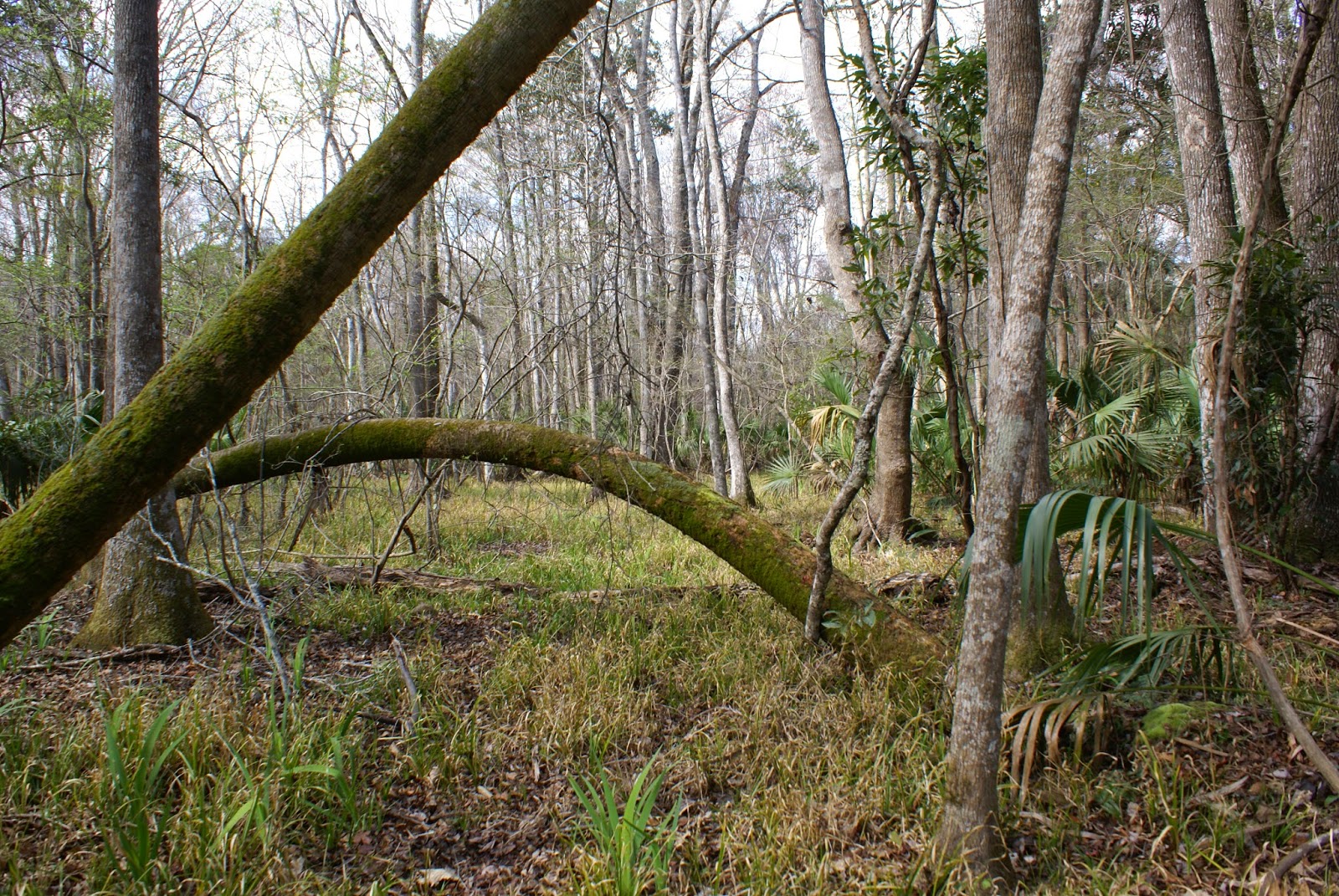SECRET TREASURES IN JEFFERSON COUNTY FLORIDA
Monticello is our county seat. Eight miles away, give or take a
few steps, you find Lloyd, Wacissa, Waukeenah, Lamont, Aucilla and a couple of
villages that are only a place name today, such as Ashville and Fanlew. The
eight mile distance is easily explained. A horse or mule and wagon with a
farmer and his family sitting atop produce or perhaps simply riding along could
easily make a sixteen-mile round trip to the county seat on Saturday or Court
day. Early Indian scares required an active militia, men who easily made the
eight-mile trip by horseback on Thursday afternoons to drill under the Meeting
Oak.
Jefferson County is about the 12th or 13th Florida county, created
in 1827, but settled earlier. A Mr. Robeson or Robertson kept a trading post
here from the early 1820s. The town that grew up around it was called
Robeson's Corners. The town’s name was changed to Monticello in 1827 and
as with the county name, honoring Thomas Jefferson.
Our treasures are simple, and easily overlooked until you stop and
study a while. High ground, hammock to wetland, our land rolls sweetly and is
covered in as many shades of green as the fields of western Ireland. This was
the favored land of the Apalachees, rich farmland where they grew their
sustaining crops.
The Apalachee's farming practices included burning to keep the
fields clear. From the time the United States acquired the territory in 1819
these rich open fields were called "Old Fields" and avidly sought by
settlers for their plantations. Men came to the area ahead of their families to
select and stake out patents that included "old fields" that would allow
them to plant a crop immediately. The first-comers didn’t have to spend a year
or more clearing away thick stands of pine and oak before plowing.
Jefferson County forests are still thick and dark green, full of
shadows, formidably dense. The extensive flatwoods of the south part of the
county are secret to all but hunters and timber men seeking stands of towering
cypress—formidable and forbidding forests. Tales abound of bears, panthers and
other wildlife lurking in the scrub.
There is an ancient legend of a volcano told and re-told by Native
Americans and area settlers. Parties searching for the volcano tell of finding
a strangely shaped hill deep in the flat woods. Huge stones are scattered about
the hill. Some speculate that this hill may be the site of a peat burn or an
underground gas fire. Then again, searchers may not have found the site of the
volcano.
The rivers are pristine. Fed by five springs, the Wacissa’s water
is icy cold and delightfully clear. A short distance south of the headwaters
the Wacissa is augmented by the generous flow of Blue Spring. The Wacissa is confined
to the lower central part of the county and joined to the Aucilla by a canal
dug by slaves. The “Slave Canal” was designed to move cotton to the Apalachee
Bay for shipment to market.
The Aucilla River forms Jefferson County’s eastern boundary with
Taylor County. This river starts in southern Georgia, just below Thomasville
and meanders the full length of the county to flow into the Apalachee Bay and
the Gulf of Mexico. Not far from Lamont in the southern part of the county, it
disappears underground to reappear in small, medium and large windows in the
limestone locals call “Sinks.”
The “Aucilla Sinks Trail” follows the underground river, wandering
from the Taylor to the Jefferson County side. Sinks range in size from simple
cracks in limestone to beautiful small lakes decorated with floating islands of
lilies.
The river reappears below Nuttall Rise, running deep and wide
around Ward Island, curving into Apalachee Bay and the Gulf. Along the high banks
stands of cypress, mixed oak and scrub enclose and reach out into the water. As
the water moves into the bay long stretches of saw grass and clumps of palms create
a disconcertingly tropical appearance.
You pass the spot on the Taylor County side of the river where the
Confederate Salt Works attracted repeated raids by the Federals. Crossing the
top of Apalachee Bay the middle cut curves northwesterly and turns into the hidden
Pinhook River that sweeps serenely down from the eastern flatwoods part of the
Saint Marks Wildlife Refuge.
On top of our rich and treasured land and rivers--or our deep and broad history as one of the oldest towns in Florida, Jefferson County is the seat of north Florida's high southern culture. This can be experienced during a luncheon or dinner in the restored 1833 Wirick-Simmons House or the Camellia luncheon in the Budd-Carswell house. It is most obvious in the graciousness of the people, many who are descendants of the county's founding families.










No comments:
Post a Comment